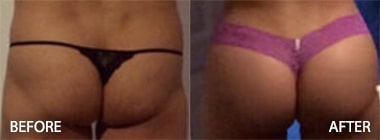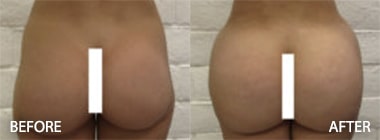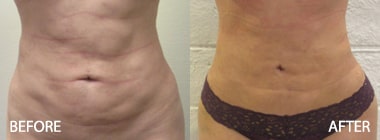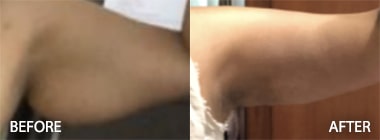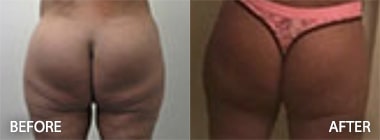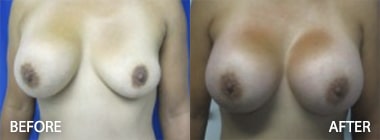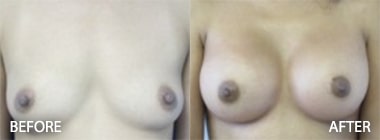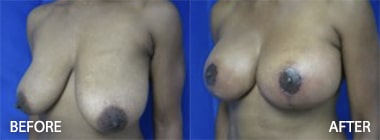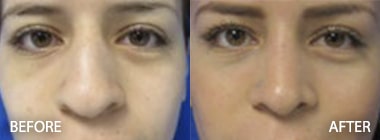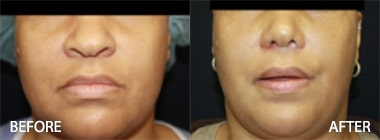There is a central question in determining the rate of fat emboli in the Brazilian buttlift and the rate of death from this procedure. There have been hundreds of fat emboli resulting in deaths, some reported and some not reported. The 130 fat emboli reported in the 2017 paper only included a small percentage of board certified plastic surgeons. Many board certified plastic surgeons did not respond. Also, non-board certified plastic surgeons were not queried. In addition, cosmetic surgeons without plastic surgery residency training were not surveyed. Finally, this contained only input from US surgeons, not from surgeons in other countries. These missing practitioners constitute the vast majority of personnel performing the procedure. Without knowing the statistics for these other groups, the rate is certainly much higher than has been reported.
Assuming you select a board certified plastic surgeon, what is the rate of death for BBL or Brazilian buttlift? It is at least 1 in 3000 but likely much greater due to under-reporting. That means that there are very qualified surgeons performing the surgery with very good technique who have experienced fat emboli and death. In fact, many of the surgeons who reported the occurrences believed themselves to be above the muscle and no where near the larger veins into which the fat was purported to enter to generate the pulmonary fat emboli.
If you are considering a Brazilian buttlift,
-Ask your surgeon about board certification plastic surgery – there are no other certifying boards.
-Ask if “under the skin” fat transfer is performed with blunt large diameter cannulae with transfer only the tissue directly under the skin
Dr. Kenneth Hughes, Los Angeles Plastic Surgeon, has performed thousands of liposuction and Brazilian buttlift procedures. Dr. Kenneth Hughes of Hughes Plastic Surgery began using the superficial, subdermal fat transfer technique about 5 years ago and has been fortunate to have no fat emboli during that period.
Side note: in the past for fat transfer to areas of the face and breasts, fat transfer experts recommended small cannulae with multiple passes to improve fat graft take. The central method of avoidance in fat transfer to the buttocks or the Brazilian buttlift should be to use much larger injection cannula compared to the surrounding vessels. While tumescent fluid with epinephrine to cause vasoconstriction can certainly be used to further reduce the diameter of the vessels, this fluid also occupies space and prevents optimal fat transfer. The vessels as they merge with the skin are no larger than 1 or 2 mm. If a large cannula of 4 mm or larger is used, it is physically impossible to enter these vessels with or without epinephrine’s effect present.
-Injection should only occur when you can see the tip of the cannula under the skin
-Ask if the surgery is occurring in an accredited facility with a board certified anesthesiologist
Before 2015, there was really no mention of the complication of fat embolus. Dr. Cardenas, et al. published a paper reporting some of the fatal pulmonary fat emboli (caused many patient deaths) that occurred outside of the United States. This paper associated injection into the muscle or deep to the muscle with fatal fat emboli. Reading this critically, a very important finding was that some of these fat emboli were not obvious on gross exam and required microscopic sectioning and staining. This means that the volumes of fat introduced were in very, very small aliquots and not the result of large bolus injection, casting doubt on the theory that the fat embolus is the result of direct bolus injection into very large veins.
The US data was published in 2017 and showed similar findings even among board certified plastic surgeons.
The take-home point is that traditional methods of transfer of fat into the gluteal muscles should be abandoned in favor of fat transfer though large cannula to areas directly visible beneath the skin to reduce the risk of fatal fat emboli and patient deaths.
Dr. Kenneth Hughes, Los Angeles Plastic Surgeon
